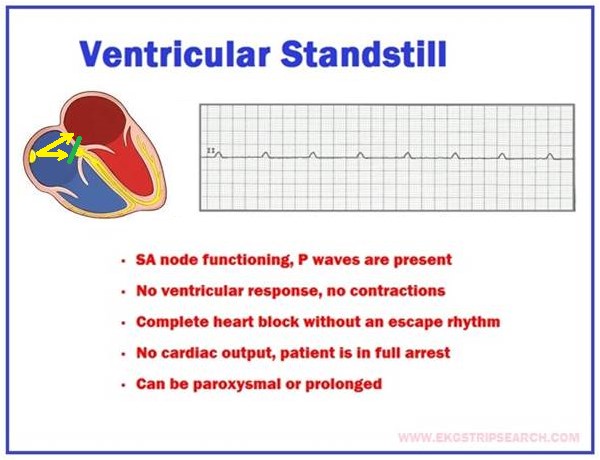 Ventricular standstill is an uncommon yet potentially fatal arrhythmia, which requires urgent recognition and treatment. As the name suggests, the ventricles come to a standstill with an almost immediate cessation of cardiac output. The SA node continues to conduct without any ventricular response due to an advanced complete heart block. If this sustains for more than a few seconds the patient will lose consciousness and no pulse will be palpable. Sustained ventricular standstill is a non-shockable rhythm, and is considered 10 times more deadly than a patient in V-Fib. With this emergent rhythm, treatment includes immediate initiation of cardiopulmonary resuscitation, and if the return of circulation is achieved, pacemaker insertion is usually required.  Paroxysmal Ventricular standstill; This strip shows SR with 3 beats of 2nd degree type II, going into a long pause (paroxysmal run of ventricular standstill), then back to SR.  Failure to Pace; This strip shows V-Pacing with failure to pace. Without the pacemaker firing, It goes into a run of ventricular standstill, Then the pacemaker starts to pace again (AV pacing). This Scenario can happen with both failure to pace and failure to capture.
Information was used from following websites learningcentral.health.unm.edu and www.sciencedirect.com Information was used from: |
